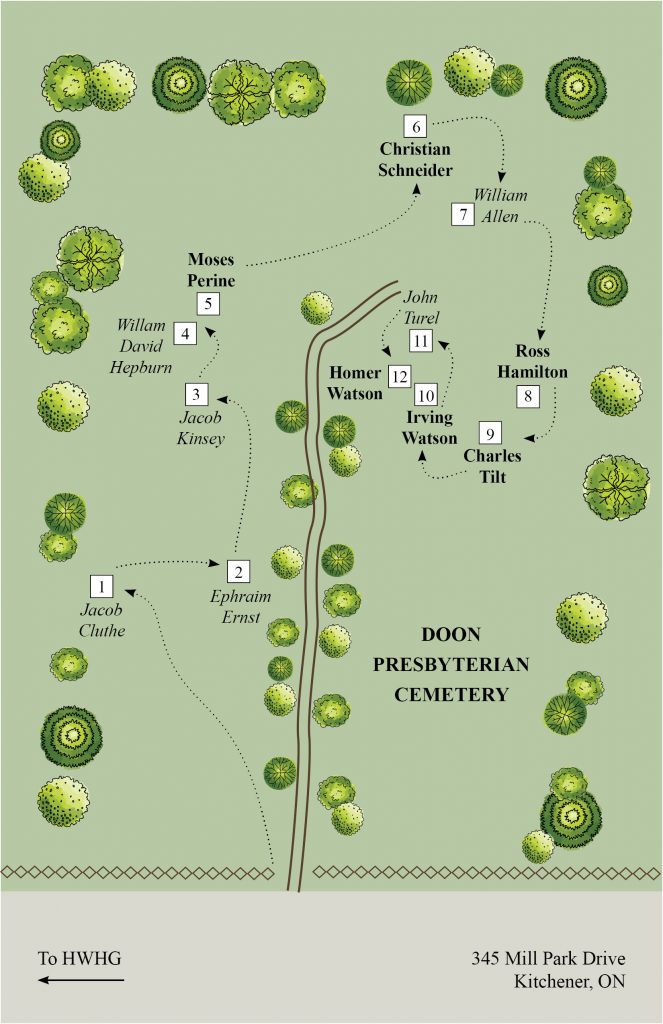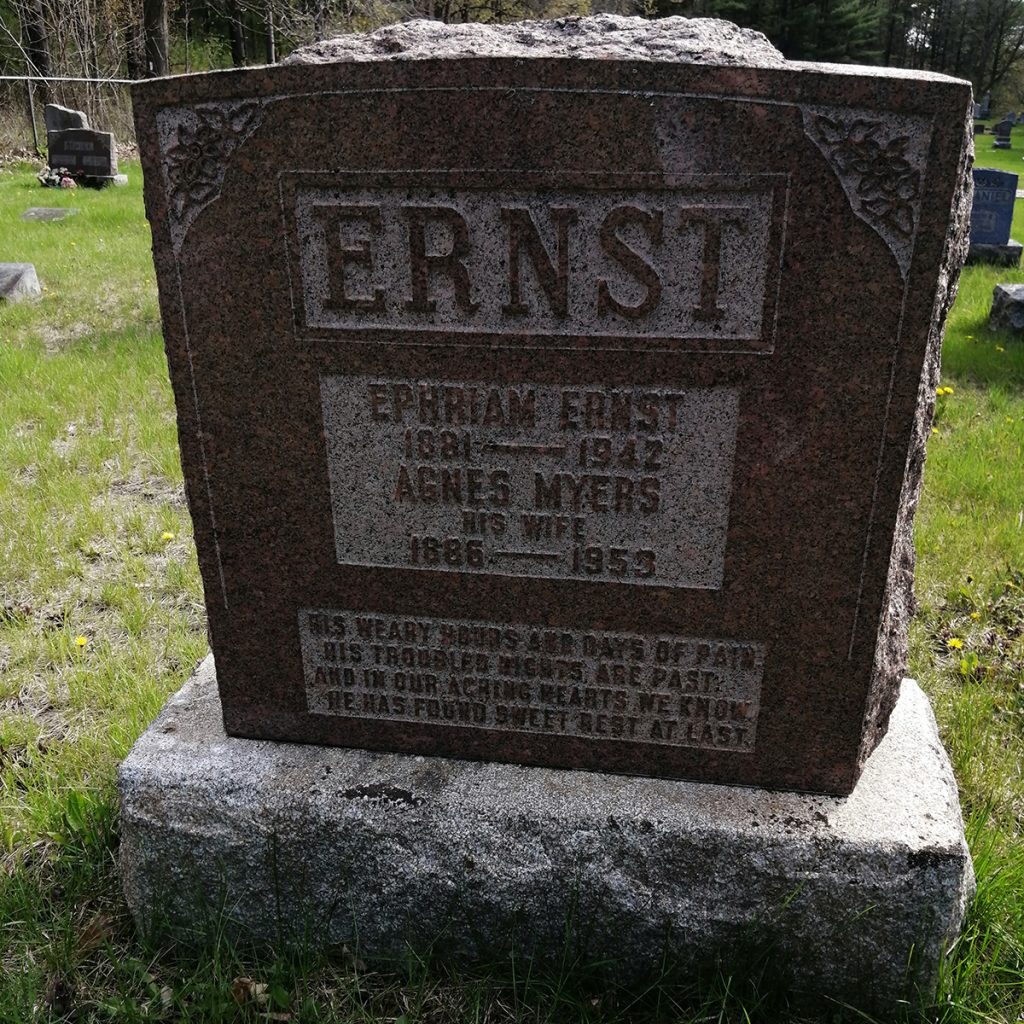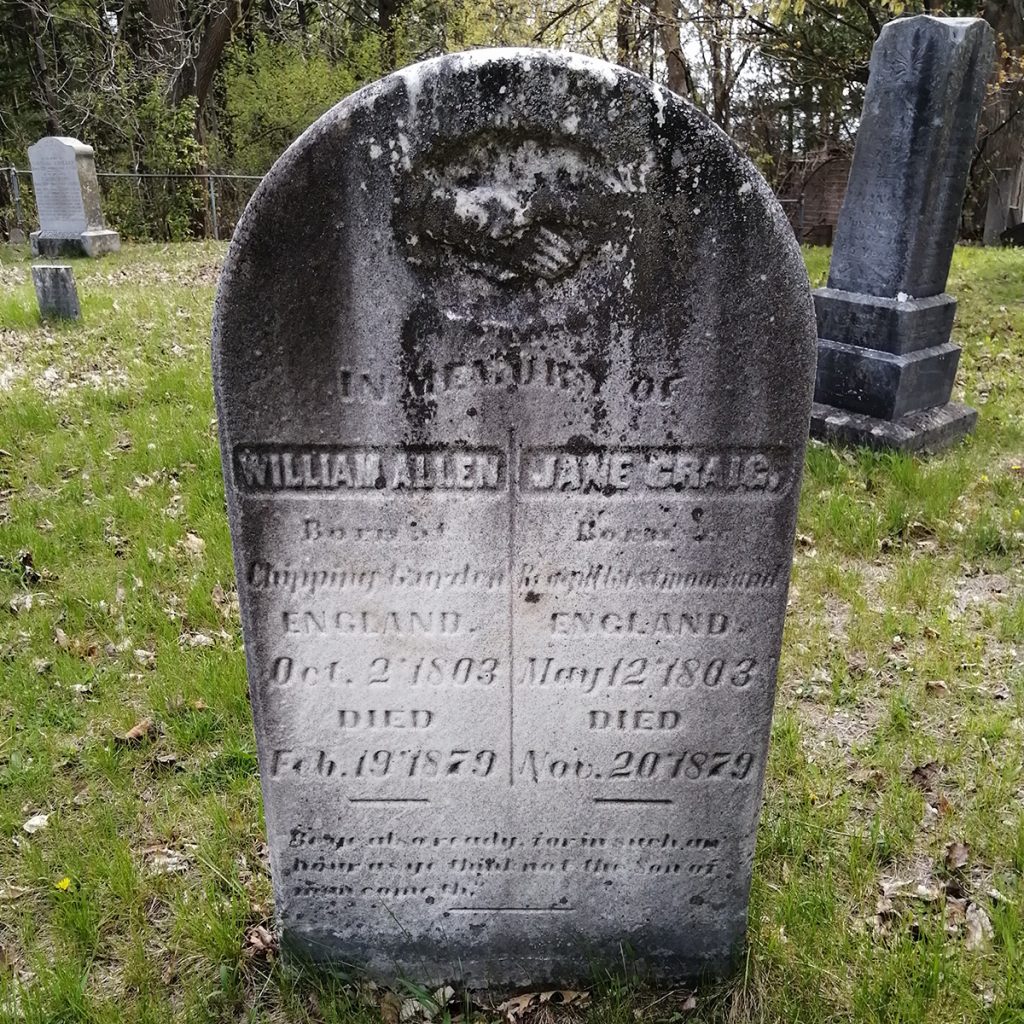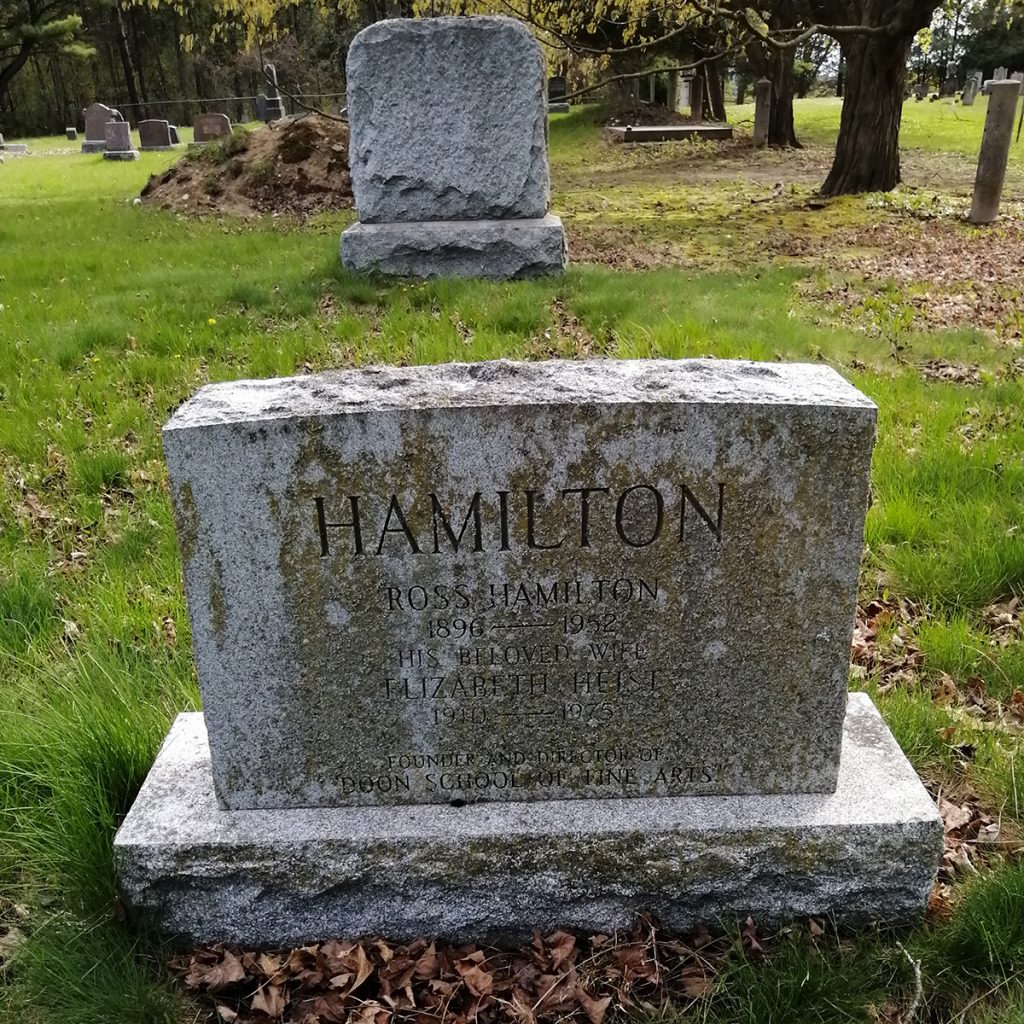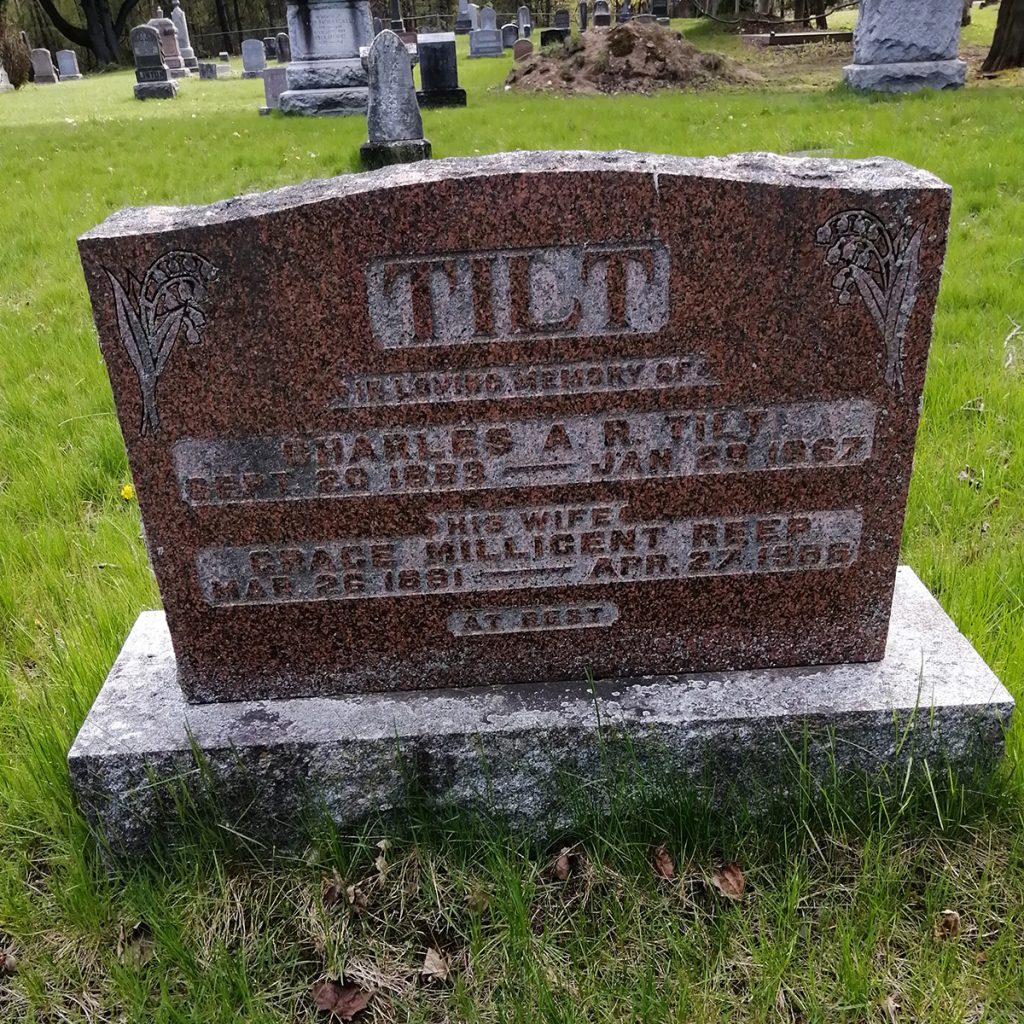Doon Presbyterian Cemetery Tour
A self-guided tour including Homer Watson’s grave
The grave of Homer Watson, celebrated landscape artist of Doon, is located in the Doon Presbyterian Cemetery, a ten-minute walk from Homer Watson House & Gallery. This cemetery holds the graves of Homer Watson, his closest relatives, and many important residents of Doon in the 19th century.
This self-guided walking tour describes the significance of several former Doon residents and their contributions to the rapidly developing village during the lifetime of Homer Watson.
1. Jacob Cluthe
Jacob Cluthe (1856-1935) bought the Ferrie grist mill (a mill that grinds grain into flour) in 1893 and converted it to a Shoddy mill (producing woolen fibres and mattresses), a cider mill and also used it to produce cutlery. Cluthe updated the mill dam, which became known as Cluthe’s dam and was famous locally for being the largest and deepest dam in the area. Cluthe’s family would later develop the millpond into a popular summer resort known as Willow Lake.
3. Jacob Kinsey
5. Moses Billings Perine
The Perine family has been living in North America since 1665, originating from French Huguenot immigrants. Moses Perine (1815-1898) and his brother W.D. Perine opened the first flax mill in Canada. This industry was the lifeblood of Doon, bringing in railway traffic and employing hundreds of local men. Moses gave Homer his first commission, while Joseph Perine offered the artist a business position as an alternative to an artistic lifestyle.
6. Christian Schneider
This granite marker is a memorial to Christian Schneider (1758-1850), the earliest settler on the site of this cemetery. Christian was born in Pennsylvania, came to Doon in 1806, and built the first house in this, then unsettled, area of primitive forest.
10. Irving Watson
Homer Watson’s younger brother Irving Watson (1856-1932) was well known in Doon as a musician in the local band.
11. John Turel
John Turel (1882-1913) was known locally as the proprietor of the inn at Lower Doon during the early 1900s. The hotel prospered at this time due to its proximity to the Grand Trunk Railway station on the busy Dutch Mail Route.
12. Homer Ransford Watson
The largest Watson memorial marks the grave the Watson family, descended from James Watson (1793-1870) who came to Doon from New York by oxcart. The grave lists Ransford Watson (1824-1861), a local sawmill owner and father to Homer Watson, along with his wife Susannah, Jude Nathan (1853-1867), Homer’s beloved older brother who tragically perished in a brickyard accident and Phoebe (1858-1947), his devoted sister. An engraving on the side commemorates Homer’s only son, Charles, who died at birth. Finally, Homer Watson (1855-1936), and his wife Roxanna (1855-1918) are listed.
Homer Watson was Canada’s first internationally celebrated landscape artist. He was known for depicting Canada as it truly was instead of through the lens of the European art world. With no formal training, he rose to popularity after his painting The Pioneer Mill was purchased by the Marquis of Lorne as a gift for Queen Victoria. Throughout his career, Watson travelled to the United States, England, Scotland, and Paris but it was the landscape in his hometown of Doon that really inspired him. Homer Watson was also one of Canada’s first environmentalists, spearheading the movement to protect Cressman’s Woods, now known as Homer Watson Park.
Roxanna Watson passed away 18 years prior to Homer and her death deeply impacted the artist. Roxa’s death likely amplified Homer’s interest in spiritualism and he would spend the rest of his life regularly communicating with her via séance.

